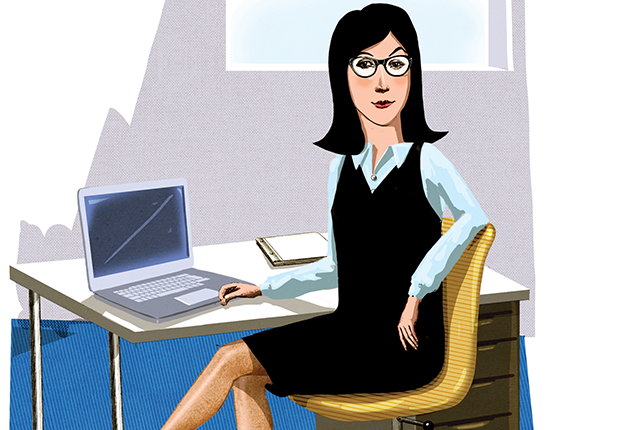
What a relief to have help with the gender issue; our pay gap reporting. We now have a hobbit to manage all HR data reporting, including the gender package. Yes, I know I shouldn’t think of her as that, but she is small, hairy, and well, remarkably hobbit-like. I say ‘she’, but Alex – no clues there – is so very beardy, I might have got that wrong too. It’s not the sort of thing you can ask. It is a credit to our diversity policy that we now employ hobbits of indeterminate gender; as a company we are not famous for inclusivity, or indeed, pay equity. Now reporting is a legal requirement and the board are forced to look at our HR reports at least once a year, it is good to have proper resources to help. The hobbit trots about importantly, enjoying the new status.
Sifting through the statistics
Although I don’t produce the data, I do get landed with a lot of questions concerning the gender issue. When the gender pay gap reports show we are worse than the national average, and even worse than our most misogynist competitors, I am asked to help figure out why. Hence, I’ve been spending a fair amount of time in Alex’s burrow finding the outliers in our numbers. What the Higher Beings really want me to do is to find a systemic error; to magically massage the numbers to show we are more equitable than we really are. As if it were that simple.
The first thing to notice is that most of the Higher Beings, our executive management team, are men. There is one woman, but you’d never know it to look at her. Marion wears her hair very short and favours the kind of crisp cotton shirt usually worn with a tie. She even bangs the boardroom table with a convincing fist just like the guys. I am afraid of her; there is no such thing as sisterhood in that corner. She is another tick for the indeterminate gender box, if you ask me.
Identifying the issues
The other thing you will notice from our data is that we don’t employ any men in junior jobs. All the trainee level positions seem to be given to pretty school-leavers with enhanced eyelashes. I can’t tell you if that is a planned recruitment strategy or it just works out that way. Naturally, these factors push our pay gap data to the extremes and highlight the gender issue. Even when you break things down into departments, the pattern is consistent. In HR, where there are more women overall, the top jobs are held by men, like Big Bad Boss, yet the army of HR business partners and administrators are all women (or hobbits). Of course, the Higher Beings would hotly contest any hint of discrimination, yet when you look around the office double standards are all too evident.
Is the gender issue a question of time? Have women not had time to work their way up the greasy ladder to the top jobs? I don’t think so. Is it because the old culture runs too deep to be changed so easily? Perhaps. But I have a more contentious theory… I may be speaking only for myself here, but could it be that some women would rather not take the rough and tumble expected in this particular boardroom? Yes, women should absolutely be entitled to the same opportunities and rewards as the men, but I still think we shy away from seniority when it comes at personal cost. I don’t mean that men are in any way better, far from it. I just see how this senior management team has to play mean and nasty to get where they are. I can’t speak for all women, but for me it simply wouldn’t be worth it the fight. At least not here.
The hobbit helps me to review the detail behind our gender bonus gap. As I was involved in facilitating the bonus calculations, I don’t need telling that bonuses are even less fair than base pay. This stems from the same issue: final decisions are made in the boardroom, so any discretion in the bonus scheme is typically handed out to those senior managers that the board have direct visibility of. And as yet, there are still more men at that level too. Add to that the fact that male senior managers are paid more than female senior managers, and the numbers get skewed further still.
Pay versus benefits
For a while, the company was doing some weird things to try to influence the pay statistics. Token women were promoted and had money thrown at them. I won’t be popular for saying it out loud, but I resented those women as much as the men. It didn’t make anything any fairer; it was just window-dressing. Now, the Higher Beings don’t even bother, they just keep asking questions and looking for someone to blame for incorrect data. Sigh.
On the benefits side, I am glad to say, there is much more parity across the company. In general, we offer similar benefits across the board. However, where the benefits are calculated a percentage of pay, such as for pensions and life insurance, the higher paid with have higher benefits overall. Plus, women no longer get to retire earlier and there is less of a difference in mortality rates than there used to be, so it is hard find any upside for being female in reward terms. Maternity pay, perhaps? But don’t get me started on the hidden discrimination that takes place around here when a woman is pregnant. Anyway, changes in paternity leave have evened the field a bit when it comes to the gender issue.
One thing is for sure: I’m coming back as a man.
Next time… Candid is offered a job.